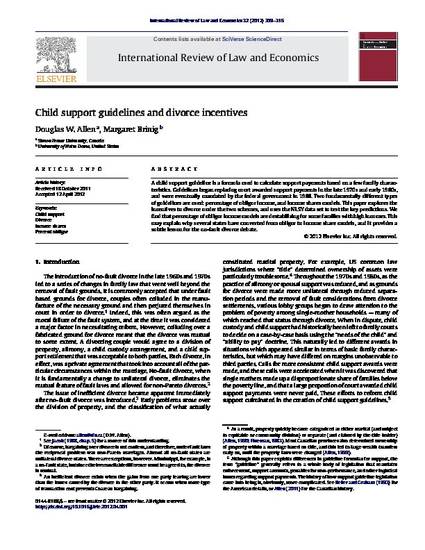
- Family Law and
- Law
A child support guideline is a formula used to calculate support payments based on a few family characteristics. Guidelines began replacing court awarded support payments in the late 1970s and early 1980s, and were eventually mandated by the federal government in 1988. Two fundamentally different types of guidelines are used: percentage of obligor income, and income shares models. This paper explores the incentives to divorce under the two schemes, and uses the NLSY data set to test the key predictions. We find that percentage of obligor income models are destabilizing for some families with high incomes. This may explain why several states have converted from obligor to income share models, and it provides a subtle lesson for the no-fault divorce debate.
Available at: http://works.bepress.com/margaret_brinig/47/

Reprinted with permission of International Review of Law and Economics.